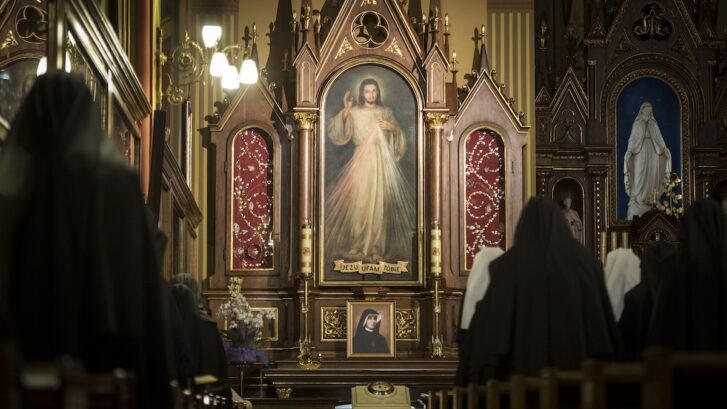Divine Mercy image at the Shrine of The Divine Mercy in Kraków-Łagiewniki. © Mazur/catholicnews.org.uk on Flickr
Divine Mercy Sunday is April 5. Learn more about this special feast day and how to celebrate it.
As feast days go, Divine Mercy Sunday is relatively new. Established in 2000 by Pope St. John Paul II, Divine Mercy Sunday was first revealed to St. Faustina Kowalska in the 1930s. During a series of apparitions, the Lord told Faustina, in part:
“I desire that the Feast of Mercy be a refuge and a shelter for all souls, and especially for poor sinners….The soul that will go to Confession and receive Holy Communion shall obtain complete forgiveness of sins and punishment….My mercy is so great that no mind, be it of man or of angel, will be able to fathom it throughout eternity.”
Pope John Paul II held a fondness for Divine Mercy Sunday throughout his life. When he officially established the feast day on the second Sunday of Easter, Pope John Paul II reiterated the power of God’s mercy towards all of His children:
“To all of humanity, who often appear lost and overwhelmed by the prevalence of evil, self-centeredness, and fear, the Risen Lord extends His loving gift — a love that forgives, brings reconciliation, and renews hope within the soul.”
To properly celebrate Divine Mercy Sunday you should:
- Go to Confession before the feast and sincerely repent all sins.
- Receive Holy Communion on that Sunday or its vigil.
- Venerate the image of the Divine Mercy.
- Show God’s mercy towards others in all you do and say.
A wonderful way to venerate the image of the Divine Mercy is to pray the Chaplet. You can follow these guidelines.
In addition, Pope St. John Paul II issued a plenary indulgence for the faithful who attend confession and Divine Mercy Sunday Mass and pray for the intentions of the Holy Father.
“Holy God, Holy Mighty One, Holy Immortal One, have mercy on us and on the whole world!”

